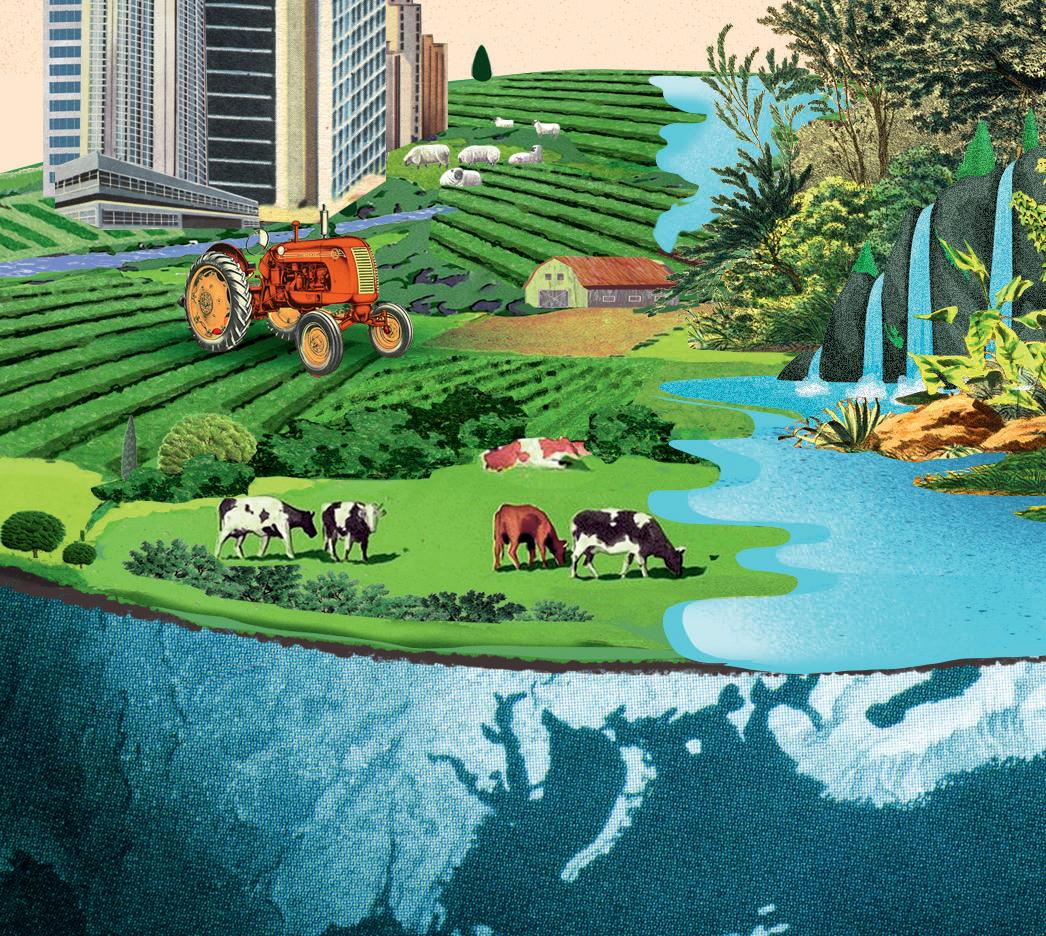
The story of the biodiversity crisis starts with a cold-case murder mystery that is tens of thousands of years old. When humans started spreading across the globe they discovered a world full of huge, mythical-sounding mammals called "megafauna", but by the end of the Pleistocene, one by one, these large animals had disappeared. There is no smoking gun and evidence from ancient crime scenes is - unsurprisingly patchy. But what investigators have learned suggests a prime suspect: humans.
Take the case of Genyornis, one of the world's heaviest birds, which was more than 2 metres tall and weighed in excess of 200kg. It lived in Australia until, along with many other megafauna, it went extinct 50,000 years ago. In North America, giant beavers weighing the same as a fridge and an armadillo-like creature called a glyptodon, which was the size of a small car, existed until about 12,000 years ago, when they, too, went extinct. In all, more than 178 species of the world's largest mammals are estimated to have been driven to extinction between 52,000 and 9,000BC.
These extinctions happened over hundreds or thousands of years, so it is unlikely people back then recognised it as a crisis. But, in some cases, the loss of these animals would have had landscape-scale impacts.
For a long time, the extinctions were thought to be linked to natural changes in the environment until palaeontologist Paul S Martin put forward his controversial "overkill hypothesis" in 1966. This stated that humans were responsible for the extinctions of megafauna, destroying the romantic vision of early humans living in harmony with nature.
By 10,000 years ago, when humans had spread across every continent except Antarctica, there were at most 10 million of them-so a lot of change had already been dished out by few people.
This story is from the December 02, 2022 edition of The Guardian Weekly.
Start your 7-day Magzter GOLD free trial to access thousands of curated premium stories, and 9,000+ magazines and newspapers.
Already a subscriber ? Sign In
This story is from the December 02, 2022 edition of The Guardian Weekly.
Start your 7-day Magzter GOLD free trial to access thousands of curated premium stories, and 9,000+ magazines and newspapers.
Already a subscriber? Sign In

No 298 Bean, cabbage and coconut-milk soup
Deep, sweet heat. A soup that soothes and invigorates simultaneously.

Cottage cheese goes viral: in reluctant praise of a food trend
I was asked recently which food trends I think will take over in 2025.

I'm worried that my teenage son is in a toxic relationship
A year ago, our almost 18-year-old son began seeing a girl, who is a year older than him and is his first \"real\" girlfriend.

BOOKS OF THE MONTH
A roundup of the best recent science fiction, fantasy and horror

Dying words
The Nobel prize winner explores the moment of death and beyond in a probing tale of a fisher living in near solitude

Origin story
We homo sapiens evolved and succeeded when other hominins didn't-but now our expansionist drive is threatening the planet

Glad rags to riches
Sarcastic, self-aware and surprisingly sad, the first volume of Cher's extraordinary memoir mixes hard times with the high life

Sail of the century
Anenigmatic nautical radio bulletin first broadcast 100 years ago, the Shipping Forecast has beguiled and inspired poets, pop stars and listeners worldwide

How does it feel?
A Complete Unknown retells Bob Dylan's explosive rise, but it als resonates with today's toxic fame and politics. The creative team expl their process-and wha the singer made of it all
Jane Austen's enduring legacy lies in her relevance as a foil for modern mores
For some, it will be enough merely to re-read Persuasion, and thence to cry yet again at Captain Wentworth's declaration of utmost love for Anne Elliot.